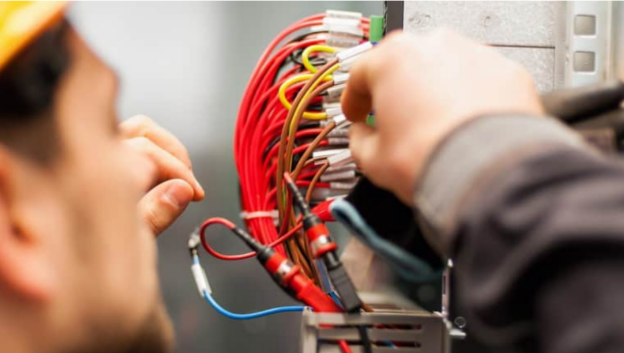Are you tired of being interrupted by power outages in the middle of an important project? As a working professional, having a steady and uninterrupted workflow is crucial to meeting deadlines and maintaining productivity. Unfortunately, unpredictable power disruptions can throw off your entire work schedule and cause major frustration.
However, there is a solution that many offices are implementing to combat this issue – backup power systems. In this blog post, we will discuss the importance of setting up backup power in your office and provide practical tips on how to do so effectively. Whether you work from home or in a traditional office setting, keep reading to learn how you can ensure an uninterrupted workflow with the use of backup power.
Make Sure You Have The Right Supplies
Before you initiate the installation of a backup power system, it’s crucial to gather the necessary supplies. Depending on the size and nature of your workspace, you may need different types of backup power systems. Uninterrupted Power Supply (UPS) systems are ideal for individual workstations, protecting against data loss during sudden outages. Additionally, DC power supplies with programmable settings are necessary for larger offices with multiple workstations and equipment. Make sure to do thorough research on the different types of backup supplies available and choose one that fits your specific needs.
Sizing the Backup Power System
The capacity of the backup power system you choose should align with your office’s power requirements. To correctly size your backup, you need to determine the total load of the devices you plan to run during an outage. This includes computer systems, lighting, and other essential equipment.
You can typically find this information on the device label or in the product manual. The sum of these loads will give you the minimum capacity your backup system should have. Remember, it’s always better to choose a system with slightly more capacity than you need, allowing for future expansion or unforeseen power needs. It may require a bit of upfront investment, but the peace of mind and uninterrupted workflow it provides will be well worth it.
Considering Fuel Options
When selecting a backup power system, it is also important to consider your fuel options. Diesel generators have been a popular choice for years, offering reliability and power. However, they require regular maintenance and can be noisy, which may not be ideal in a quiet office setting. On the other hand, natural gas generators are quieter, require less maintenance, and provide a cleaner energy option, making them an increasingly popular choice.
Battery-powered backup systems are another good option, especially for smaller offices or home offices. They are silent, require minimal maintenance, and can be easily installed. Each of these options has its own set of advantages and drawbacks, so it’s important to evaluate your specific needs and constraints before making a decision. You might also want to include on-site fuel services like Specialty Fuel Services to your backup plan to keep your generators running until you get power back.
Installation and Location
The installation and location of your backup system are critical components to consider. If you’re using a generator, it needs to be professionally installed in a well-ventilated area to avoid overheating and gas accumulation, and it should be easily accessible for maintenance. Be sure to keep it at a reasonable distance from your workspace to mitigate noise and fumes. If you live in an area prone to flooding, the generator should be placed on an elevated platform.
For UPS systems and battery backups, they should be located near the devices they’re protecting, but not in direct contact to avoid heat generation issues. Ensure that these systems are installed in a clean, dust-free area to prolong their lifespan. Also, remember to place them where they can be easily accessed for periodic checks and maintenance.
The installation process can involve electrical work, so unless you are highly experienced in this field, it’s recommended to hire a professional. This ensures your backup power system is safe, effective, and complies with local electrical codes.
Automatic Transfer Switches
Automatic Transfer Switches (ATS) are a vital component of any backup power system. Their primary function is to switch the power source from the main supply to the backup generator instantly in the event of a outage, ensuring uninterrupted workflow. As the name suggests, this process is automatic, meaning it requires no manual intervention, which can be crucial during sudden power disruptions, especially those that occur outside of regular working hours.
Furthermore, once the main power supply is restored, the ATS automatically switches back, shutting down the generator and saving fuel. When choosing an ATS, consider the load it needs to handle and ensure it matches your backup system’s capacity. It is generally recommended to have the ATS professionally installed to ensure proper and safe operation.
Regular Maintenance
To ensure the effectiveness and longevity of your backup power system, regular maintenance is key. This includes periodic checks of fuel levels and battery life, as well as inspection for wear and tear or other potential issues. For generator systems, maintenance might involve changing the oil and filters, checking the coolant level, and running the generator periodically to prevent stagnation of fuel. UPS systems and battery backups require checks for any sign of battery swelling or leakage.
If your system includes an Automatic Transfer Switch, it should also be checked to confirm its proper operation. Remember, consulting with a professional for maintenance can ensure the optimal performance of your backup power system, safeguarding your office’s productivity and work continuity.
Testing Procedures
Conducting regular tests of your backup power system is crucial to ensuring it will function properly when required. These tests help identify any potential issues that might hinder the system’s performance during actual outages. For generator systems, a typical test involves running the generator on load for a certain period, usually 30 minutes to one hour every month. This not only confirms the operational status of the generator but also helps to keep the engine parts lubricated and prevents fuel stagnation.
For UPS systems and battery backups, tests usually involve simulating a power outage to confirm the system can smoothly take over the power supply. This ensures all connected devices continue to operate without interruption. Make sure to check the battery levels before and after the test to determine if there are any drastic power drains, which could indicate a need for battery replacement.
Power outages are an unavoidable reality, but they don’t have to disrupt your workflow. By setting up a backup power system in your office, you can ensure uninterrupted work continuity and protect against data loss or missed deadlines. Remember to select the right type of backup system for your specific needs, size it correctly, and conduct regular maintenance and testing to keep it in optimal condition.
 If you need office space, visit OfficeFinder. We can help you anywhere in the us at no cost to you! Message us now!
If you need office space, visit OfficeFinder. We can help you anywhere in the us at no cost to you! Message us now!

